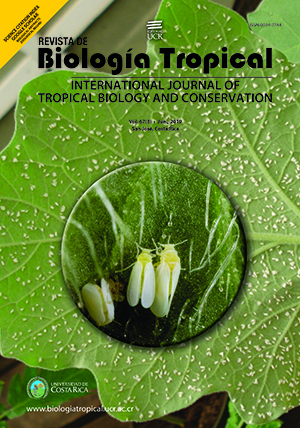Abstract
The "Mullet" Mugil incilis is one of the most important fish resources of the artisanal fishing industry of the Colombian Caribbean. However, their populations are being overexploited for decades, which together with the deterioration of their habitat could be causing a negative effect on the genetic variability of their populations. In order to generate scientific information to support decisions and more appropriate fisheries management and conservation policies, the variability and genetic structure of M. incilis along the Caribbean coast of Colombia was evaluated. Six coastal systems were selected, including three coastal lagoon systems with open access to fishing (Ciénaga La Virgen, Ciénaga La Caimanera and Bahía de Cispatá) and three coastal lagoons belonging to fauna and flora sanctuaries of the network of National Natural Parks of Colombia (Los Flamencos, Ciénaga Grande de Santa Marta and El Corchal). Seven microsatellite loci were used, which revealed 94 alleles with an average of 11.6 alleles per locus. The values of genetic variability in all sampling sites were low (Ho = 0.108-0.402), although they showed a high genetic potential (He = 0.772-0.868). All the loci presented departures from the Hardy-Weinberg expectations due to a deficiency of heterozygotes. This was in agreement with the events of recent bottlenecks that were determined in all the lagoons and the causes could be overfishing and the presence of null alleles. The analysis of genetic structuring revealed the existence of two populations, one formed by the localities located from La Guajira to Sucre; a second in Bahía de Cispatá and the third one in Ciénaga La Caimanera. This study suggests that the processes involved in the level of fishing exploitation, in the reproductive cycle and in the oceanographic conditions of the South Caribbean region determine the genetic variability and structure of M. incilis. Recommendations for the management and conservation of M. incilis are proposed.
##plugins.facebook.comentarios##

This work is licensed under a Creative Commons Attribution 4.0 International License.
Copyright (c) 2019 Juan Carlos Narvaez Barandica, Rafael Mendoza Ureche, Julián Quintero Galvis


